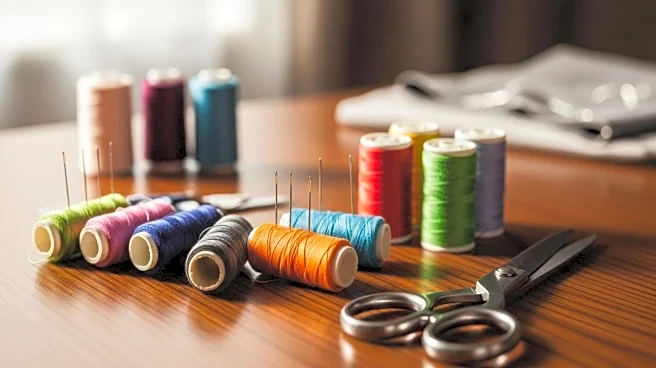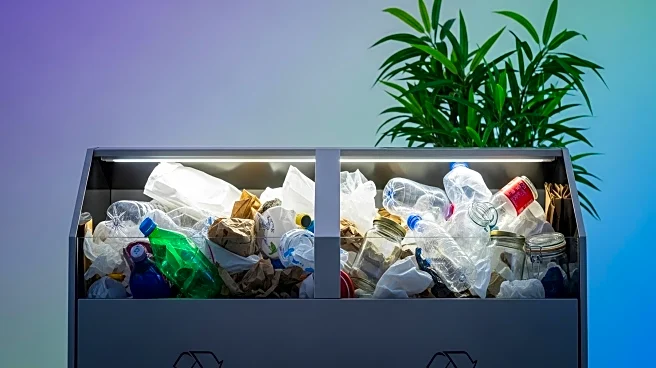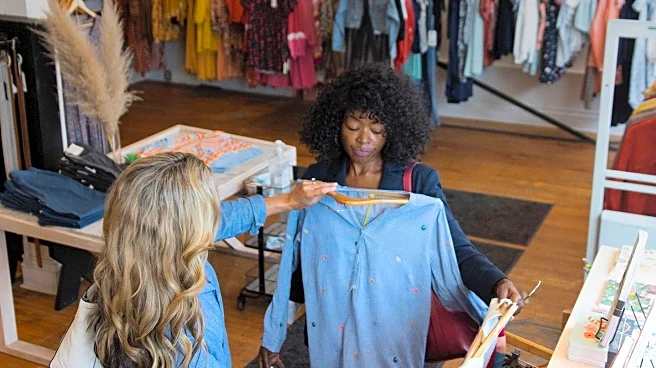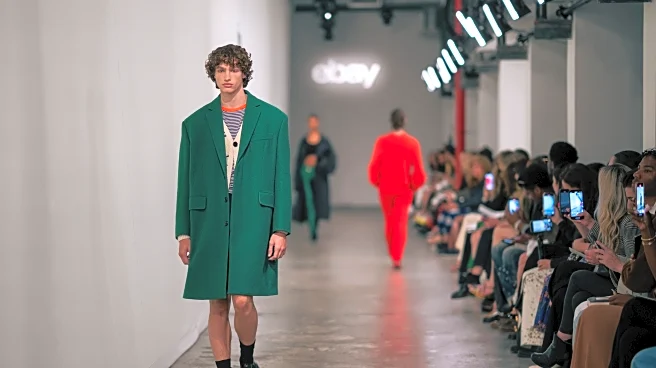What is the story about?
What's Happening?
The trend of secondhand shopping is gaining momentum as consumers and industry experts emphasize sustainability. Online platforms are enhancing the thrifting experience with features like livestream shopping and AI-powered search. Despite the environmental benefits of buying secondhand, experts caution against overconsumption, as it can still lead to increased textile waste. The resale market is expanding, with companies like eBay and ThredUp reporting significant sales growth. However, the environmental impact of online shopping, including emissions from shipping and server use, remains a concern.
Why It's Important?
The rise in secondhand shopping reflects a shift towards more sustainable consumer habits, potentially reducing the environmental impact of the fashion industry. This trend challenges the fast-fashion model, which is known for its significant ecological footprint. As more consumers opt for secondhand items, fashion companies may be pressured to adopt more sustainable practices. However, the success of this movement depends on consumers' ability to resist overconsumption and prioritize quality over quantity. The growing popularity of secondhand shopping could lead to a more circular economy in the fashion industry, benefiting both the environment and consumers.
What's Next?
As the secondhand market continues to grow, more brands may integrate resale into their business models. Consumers are likely to see an increase in online platforms offering secondhand options, potentially leading to more competitive pricing and a wider selection of products. Additionally, there may be increased scrutiny on the environmental impact of online resale platforms, prompting companies to adopt more sustainable practices. The fashion industry could see a shift towards more durable and ethically produced clothing as consumer demand for sustainable options rises.
Beyond the Headlines
The secondhand shopping trend highlights broader cultural shifts towards sustainability and ethical consumption. It challenges the traditional fast-fashion model and encourages consumers to consider the lifecycle of their clothing. This movement also raises questions about the role of consumer behavior in driving industry change and the potential for policy interventions to support sustainable practices. As the trend grows, it may influence other industries to adopt similar sustainable practices, contributing to a more environmentally conscious society.
AI Generated Content
Do you find this article useful?














